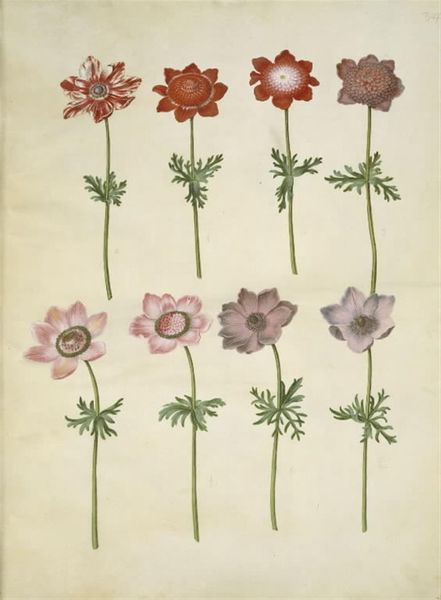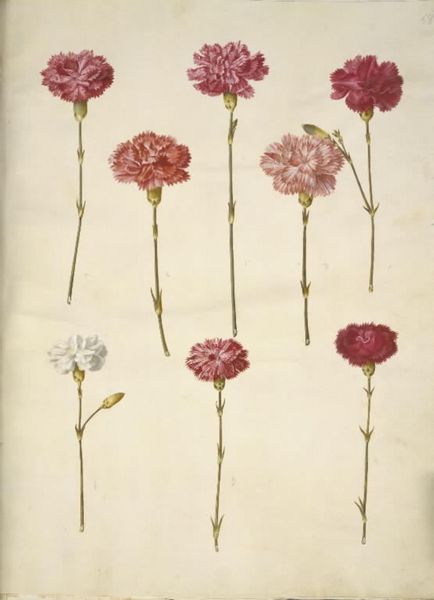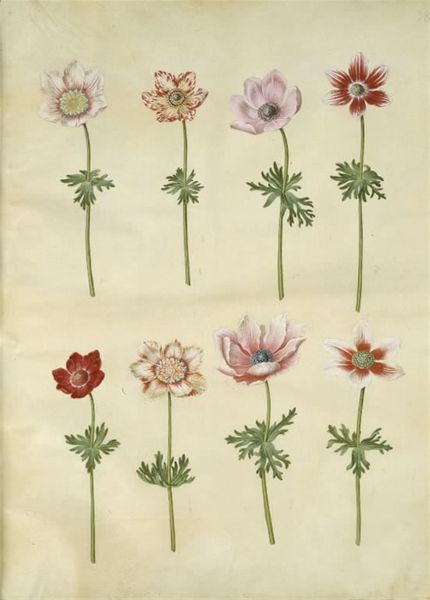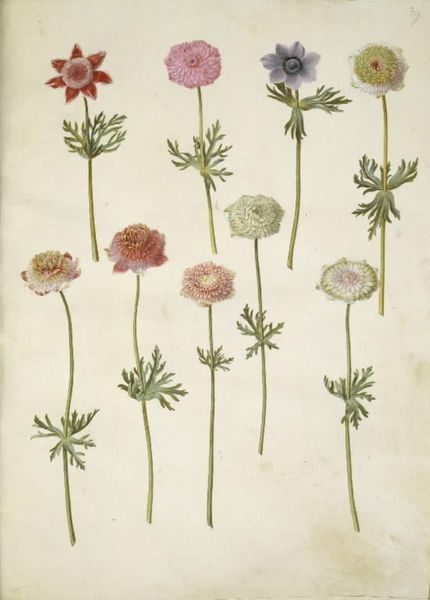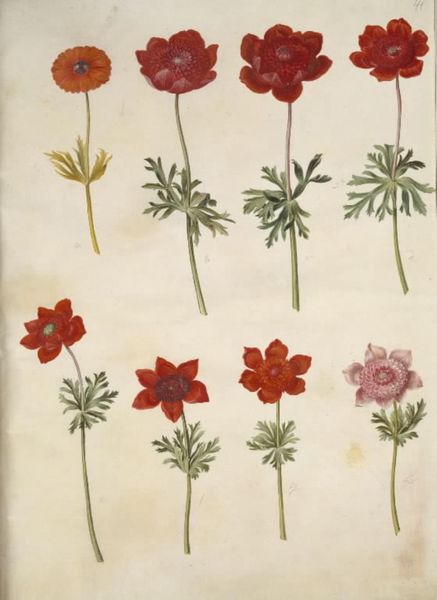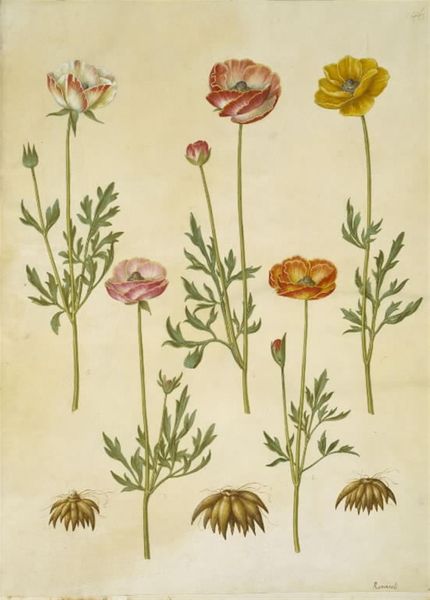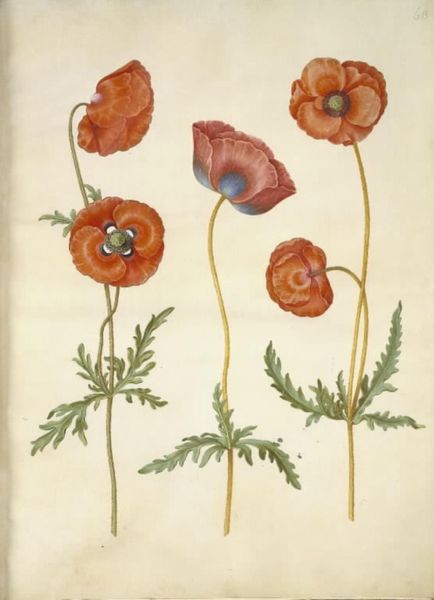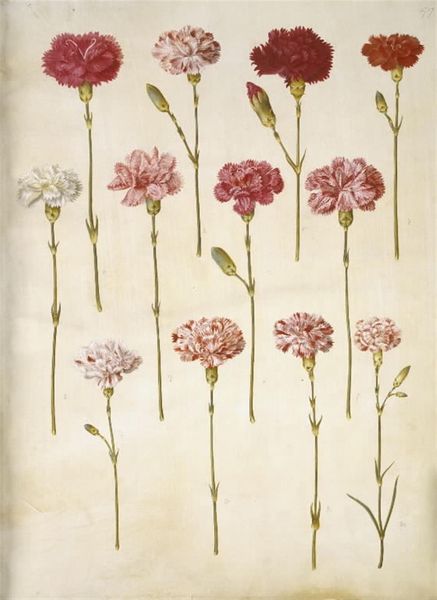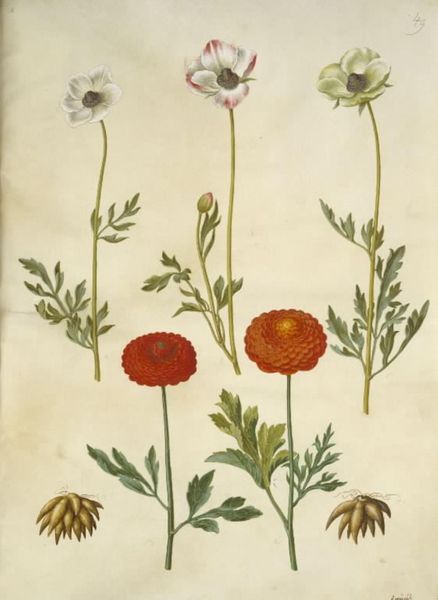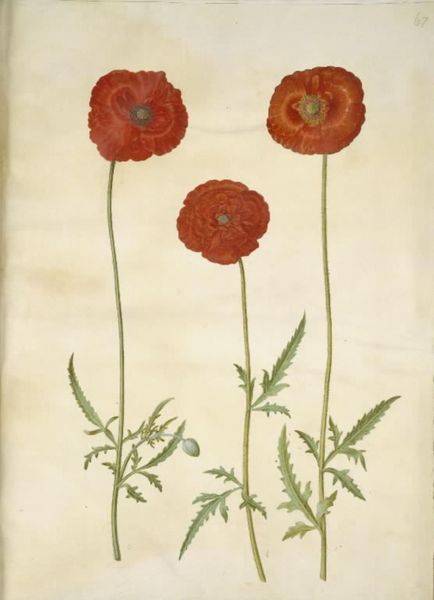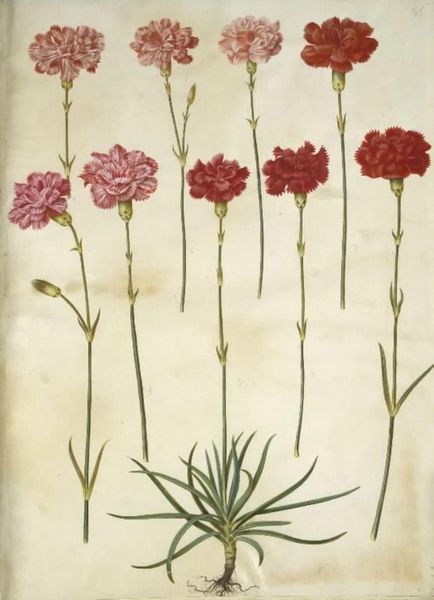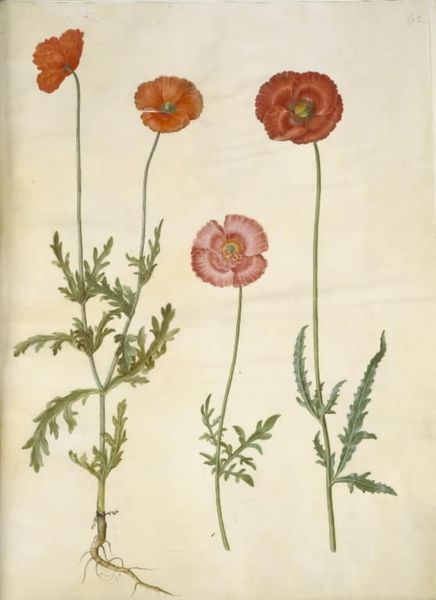
Anemone coronaria L. (fransk anemone); Anemone pavonina (påfugle-anemone) 1649 - 1659
0:00
0:00
drawing, gouache, watercolor
#
drawing
#
water colours
#
gouache
#
11_renaissance
#
watercolor
#
watercolour illustration
#
northern-renaissance
#
watercolor
Dimensions: 505 mm (height) x 385 mm (width) (bladmaal)
Editor: Here we have "Anemone coronaria L. (fransk anemone); Anemone pavonina (påfugle-anemone)," rendered in watercolor and gouache by Hans Simon Holtzbecker sometime between 1649 and 1659. I am immediately drawn to the seeming simplicity and repetition of the flowers, yet their subtle variations are fascinating. How do you interpret this work within its historical context? Curator: That’s a perceptive observation. Holtzbecker’s botanical illustrations weren’t just about aesthetics. Consider the era – a time of burgeoning scientific exploration and colonialism. Botanical art like this served as a crucial tool for documenting and classifying newly "discovered" plants, often intertwined with colonial ambitions and resource exploitation. Editor: So, beyond the surface beauty, it's also a document of that complex relationship? Curator: Precisely. Each flower represents a specimen, categorized and displayed as a form of knowledge and power. Think about the labour involved: indigenous knowledge often extracted and appropriated to serve European scientific pursuits. Are we really celebrating nature, or cataloguing resources? Consider also how gender and class played into this. Botanical illustration was a genteel skill, mainly practiced by privileged women; yet this artistry contributed to the "scientific" body of work produced by men. Editor: I never considered how much power dynamics could be embedded in something that looks so...gentle. Curator: Indeed. And the seemingly objective style obscures these underlying narratives. Looking closely allows us to unearth them. The artist is selecting these particular flowers to present in a particular manner. What impact did that selection have? Editor: It gives me a lot to think about regarding the historical implications of artistic expression. I will definitely never look at floral paintings the same way. Curator: It highlights the importance of understanding art as existing within broader political and social contexts, influencing not only how we see it but also how we relate to it.
Comments
No comments
Be the first to comment and join the conversation on the ultimate creative platform.

